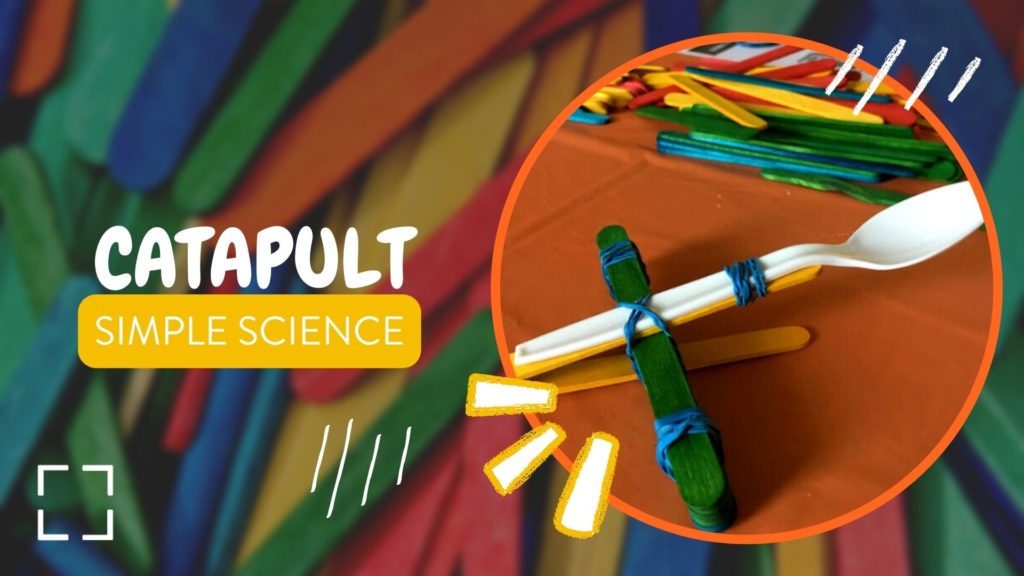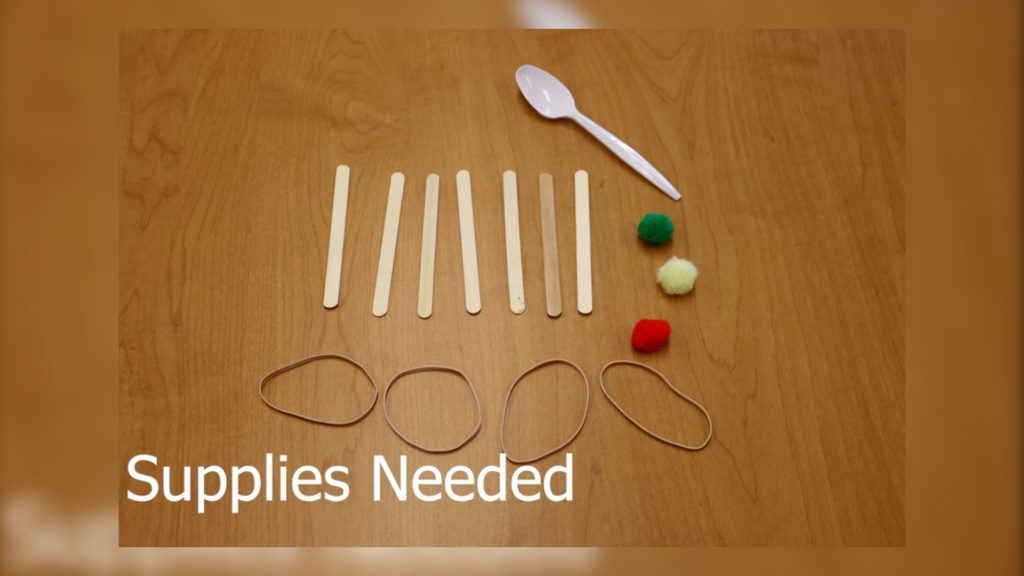Use your engineering skills to create a catapult
This simple science experiment can be used over and over for hours of fun! You can make these five-step catapults with materials you likely have at home. These easy catapults can be used to explore multiple engineering and physics concepts. Give them a try using the instructions below. You can check out these titles on Hoopla for other catapult designs: Stomp Rockets, Catapults, And Kaleidoscopes and The Art of the Catapult.

Materials needed
- 7 plain popsicle/craft sticks
- 4 rubber bands
- 1 plastic spoon
- Pom poms, cotton balls, or other objects safe to use as projectiles

Instructions
- Make a stack of 5 plain popsicle sticks all on top of each other. Rubber band them together on both ends.
- Take your remaining two popsicle sticks and stack them on top of each other. Rubber band just one end of them together close to the edge.
- Pull your two colored sticks apart slightly and slide the stack of five plain sticks in between.
- Hold your stack of five sticks in place and put a rubber band around them and your two parallel sticks to hold it all together. Do this by putting the rubber band over two of the stacks at a time. The rubber band should look like an X in the middle. See the picture for an example. Your creation should now look like a lowercase t.
- Grab your spoon and tuck it through the middle rubber band. Tuck the bottom of the spoon into the rubber band holding the stack of two together.
- Place your pom pom in the spoon and press down on the very top to launch!
Questions to ask
- Does the weight of what you are shooting make it go a longer or shorter distance? Try shooting different objects to see if the weight affects distance.
- Does the force you apply to the spoon change how far the object flies? Try pushing very lightly and then pull the spoon down hard. Which flew the farthest?
- Does the number of sticks that are stacked in the middle matter? Try rebuilding your catapult with just three plain sticks in the middle. Does it work better or worse?
- How accurate is your catapult? Pick an object close to you and try to shoot your pom pom at it. Did it hit it?
How it works
The earliest written records of catapults date back to the 3rd century BC. That’s over 2,300 years ago! Catapults were used in many ancient wars to launch things over high castle walls. Catapults use physics to store energy and then release it very quickly to fire an object. The three main energy storage tools are tension, torsion, and gravity. There are many types of catapults that all work a little differently. Your popsicle stick catapult stores potential energy when you pull the spoon down. When you let go of the spoon, the potential energy changes to kinetic, and your object flies!

Audra D.
With 8 locations throughout Vanderburgh County, EVPL is ready to discover, explore, and connect WITH you! We encourage you to uncover new things, revisit old favorites, and to engage with us along the way.
200 SE Martin Luther King Jr. Blvd
Evansville, Indiana 47713
Administration: ceo@evpl.org
Card & Account: circulation@evpl.org
Feedback & Ideas: marketing@evpl.org



